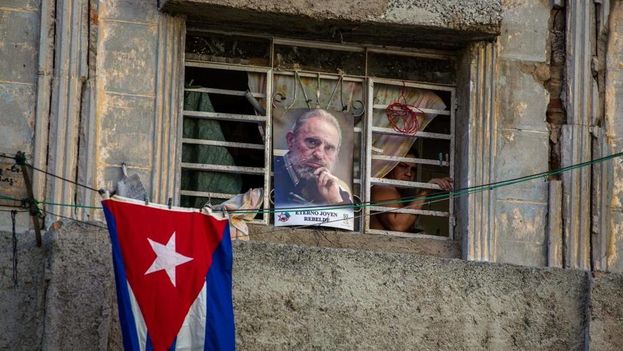
![]() 14ymedio, Miami, 21 December 2017 — The authorities have put a number on Cubans living in an “illegal” situation in their own country: there are 107,200, of whom 52,800 have been in this situation for more than 20 years. This was reported Thursday by the president of Physical Planning, Samuel Rodiles Planas, during the plenary session of the Parliament meeting this week in Havana.
14ymedio, Miami, 21 December 2017 — The authorities have put a number on Cubans living in an “illegal” situation in their own country: there are 107,200, of whom 52,800 have been in this situation for more than 20 years. This was reported Thursday by the president of Physical Planning, Samuel Rodiles Planas, during the plenary session of the Parliament meeting this week in Havana.
The Cuban government considers people who reside somewhere other than at the address where they are registered in the Identity Card Office to be “illegal.” In cities such as Havana, completing an address transfer is a complex process that requires approval from the Municipal Administration Council, so many migrants from the elsewhere in the country reside in the capital city clandestinely.
Rodiles Planas also said that 127,000 urban illegalities were reported in 2017, of which the Cuban capital accounts for more than 40,000. Other cities with a high ‘crime’ rate in this regard are Santiago de Cuba, Granma, Artemisa and Matanzas, with more than 10,000 each.
Rodiles Planas, who is a Division General in the Revolutionary Armed Forces (FAR), also attributed the problem to the “lack of demand, control and monitoring by the municipal governments’ confrontation group.” In addition, he highlighted the deficit of means of transport in the municipal physical planning headquarters.
Most of the urban illegalities are concentrated in the field of construction, according to the official press, which mentions new works and violations of licenses and projects as some of the main violations committed.
Cuba needs at least one million new homes, as recognized by the authorities. Construction plans have fallen dramatically since the 1980s and the deterioration of the existing building stock is plain to see.
During 2017, the State planned the construction of only 9,700 homes. Added to this is the damage caused by natural disasters such as Hurricane Irma, which destroyed 158,554 dwelling units, according to preliminary data.
In some provinces like Havana, the housing deficit has caused many people to settle in marginal neighborhoods popularly known as ‘llega y pon’ – literally ‘arrive and put (down)’ – that is, squatter settlements. The authorities raise all kinds of obstacles to internal migration, especially from the eastern part of the country, but fail to prevent it.
It is estimated that in Havana, with some 2.1 million inhabitants, there is a deficit of 206,000 homes, while in Santiago de Cuba, where half a million people live, 103,000 homes need to be built.
This week Raul Castro acknowledged the problem of housing and asked the plenary of the Central Committee of the Communist Party to give a “greater boost” to the housing situation in the country.
_____________________________
The 14ymedio team is committed to serious journalism that reflects the reality of deep Cuba. Thank you for joining us on this long road. We invite you to continue supporting us, but this time by becoming a member of 14ymedio. Together we can continue to transform journalism in Cuba.
